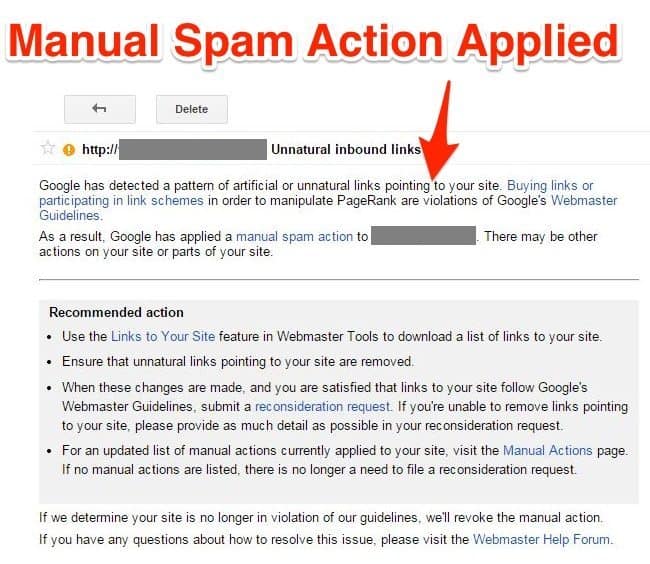15 Black Hat SEO Practices To Destroy Your Rankings in 2019
A number one ranking in the search engines is the dream of every website owner in 2019. A number one ranking drives targeted customers and more sales.
Black hat SEO will get you nowhere fast.
White hat search engine optimization is the best way to get your site to the top of the search results.
White hat methods will always outperform black hat over time.
Ensuring you get a high ranking without using shady techniques is important. The best approach is an organic long-term focus on centered on user experience.
What are Black Hat SEO Practices?
Black hat SEO tactics are deceptive SEO techniques. Websites owners use these methods to try to trick search engine algorithms. ‘Black hat SEO’ is manipulating search engines into listing a site by being deceptive.
Search engines want websites to provide human readers with accurate, up-to-date information. Google wants their results to remain a valuable reference for users.
Search engines use programs called spiders or bots to search the web for content people want. These computer programs hunt for links to follow and discover more sites. The spider’s catalog sites according to keywords the sites use and list them for searches.
Black hat methods try to trick these spider programs. The goal is to get a higher ranking than deserved.
Search engines penalize sites caught using inappropriate SEO practices. Penalties for improper SEO include lower ranking or outright banned from search engines.
Searches need to provide excellent informative links with up to date information. Shady practices prevent this from happening.
Google regularly updates algorithms to catch deceptive websites. Google makes small changes to the algorithms over 500 times a year. Instead of using shortcuts and misleading tactics, it is better to set a site up correctly from the beginning.
It is not worth trying to stay ahead of the Google algorithm updates.
Those not trying to be sneaky could accidentally run afoul with black hat techniques. The algorithms do not measure the purity of intent. This is why it is essential to know what are and to avoid them.
Be a White Hat SEO, 15 Black Hat Tactics To Avoid
#1 Keyword Stuffing
Search engines check for keywords used on websites to find out if a site is a good match for a search.
For example, while searching for the keyword “best games,” the results will list sites using the word or associated words in the text.
More is not better. Sometimes people get the idea they can add significant amounts of keywords to help their site. So if you visit a website with a long list of similar words, the site is using keyword stuffing.
Typically, people do not use the same word many times in one paragraph. Imagine someone came up to you on the street and said, “Hello, I have a wallet and noticed you dropped your wallet. A wallet is always an essential wallet, and everyone has a wallet we love in our wallet pockets. You should ensure your wallet is safe from wallet dropping by using a unique wallet carrier. I could provide you a wallet carrier for your wallet!” You would likely suspect the person was mentally ill. No one speaks this way.
A website should not read like the example stranger giving back your wallet. You would check your wallet after getting it back to see if money is missing.
In the same way, everyone should question sites who use keyword stuffing.
Keyword stuffing is a dishonest technique that is a surefire way not to rank.
#2 Hidden Text and Links
Keyword stuffing is not the only way to be sneaky with keywords. Often, site owners get the idea to keep their sites readable by humans but want to add extra keywords or links anyway. Usually, these extra keywords do not make sense on the site, so website owners hide them from the readers.
Websites can hide keywords and links by making the text the same color as the background. No one reading the site can see the hidden links and text. The search engine spiders can see them and count these as part of the site.
This might temporarily allow the listing with hidden keywords. When this happens, the search results are no longer useful. A human searcher gets a website with no relation to the words searched.
Search engines soon catch listings using this strategy.
#3 Irrelevant Keywords and Poor Quality Content
Sneaky website owners also try to create long content not intended for human consumption, often spun.
As with the other keyword related black hat SEO tactics, using irrelevant keywords and poor content is not a good idea.
#4 Duplicate Content
Do not try this!
Not only is copying plagiarism, the search engines will catch the copies and deindex the pages. There is no advantage to a search engine to list many sites with the same content.
When all the sites listed in a search result are exactly alike, it is frustrating. No one wants to sort through many sites only to find the same content over and over again.
Focus on content marketing and stick to relative valuable content.
You may need to have a duplicate checker review tool to avoid plagiarism.
#5 Article Spinning
As a way to try to avoid duplicate content, people invented article spinning or content automation. This is when someone takes the material and changes the text “just enough” by adjusting most of the words.
Using synonyms for as many words as possible, the article is different but is still a duplicate. It provides a poor user experience.
This may work for some short sentences. A sentence like, ‘Spot ran outside.’ is a good example. The sentence may become, ‘Rover trotted outdoors.’ This is a brand new sentence conveying the same kind of message.
Often, low-quality article spinning becomes a substantial jumbled mess to anyone who tries to read it.
Some advanced content spinning programs can create easily understood and creative articles quickly.
This entices, even more, people to churn out spun articles to place garbage over the web. These articles all link back to one seller, website, or a single product. It can make it look as if many people all over the web are talking about the awesomeness of the linked product. Search engines recognize this is not true.
Constant updates to search engine algorithms keep this type of deceptiveness in check. Save your money and invest in quality content. Content automation is dead.
#6 Cloaking
Imagine finding the perfect search result on Google. Then when you click the link, you see a site which is nothing at all like the promised website.
This is precisely what happens when a search engine lists a cloaked site by accident. People find themselves in unexpected locations on the web.
A cloaked site shows two different sets of information. One page goes to the search engine while the other page goes to the users of the site.
Cloaking is all about tricking search engines short term about the type of content in a site. Targeting this strategy at the search engine will upset end users who visit the site.
#7 Fake click bait
Clickbait is another method which misleads Internet users. Suppose you saw an interesting headline about Donald Trump. Then, when you clicked it, you arrived at an article all about chewing gum.
Perhaps, you read the article for a while. You were waiting for Trump to appear, but the President of the United States was not even in the article! The article was clickbait.
This usually makes a reader frustrated, and they leave the site as soon as possible, never to return.
Fake news is a sure fire way to draw the ire of Google, Facebook, YouTube, or any of the major players.
#8 Comment Spamming
Blogs, videos, and more leave content open to comments from the general public all across the web.
Comments often have useful and engaging content, so search engines must check them. This entices sneaky SEO practitioners to put advertisements or keywords in comments.
Website owners must remain proactive with watching and securing comment areas. If not, comment sections will fill up with advertisements for many unrelated products. Some comments from spammers make little sense. Others link to random products which have nothing to do with the site.
If you have an unnatural amount of spammy links from comments, you risk being penalized. Spend your time building links that are high quality
#9 Social Media Network Spam
Much like comment spam, social networking spam is a black hat technique.
When you decide to use social networks to advertise, it is essential to avoid spamming. The best advertisements use proper channels for the ads. Great ads do not intrude where ads should not be.
Spamming is placing your advertisement over and over. Spamming tends to annoy readers. This does not typically attract them to your website or product.
#10 Page Swapping
Another quick way to receive a Google penalty is to page swap. To page swap, someone makes a page which is ranking well on Google for a search term. Then they swap the page out for content about something unrelated to the search term.
This removes all the good content Google used to rank the page well. It also replaces the content with something new. The new content may not be as good. It also is unlikely to be what the user is clicking the link expected.
#11 Domain Squatting
Everyone makes typos occasionally.
Using potential typos to redirect users to a different site is shady. Imagine you are planning to visit Yahoo.com but you accidentally typed in Yahooo.com. This is a simple mistake to make, but sketchy people could have bought the domain with the extra ‘o’ in it on purpose.
Luckily, the real Yahoo.com owners bought the Yahoo domain as well, so you still get where you were going. Domain squatters catch these errors before the domain owners do.
Most people who own a website have not purchased all the misspellings of their domain. Sketchy folks might grab up such misspelled domain names. These domains are then used to try to trick people into buying from them instead of the site intended. Others use this to steal passwords, spread viruses, or other wicked purposes.
For SEO, a person might try to have the misspelled domain name redirect to their site. This gets a couple of extra site visitors. While this might get a few extra confused or angry visitors, these visitors are not the visitors you want.
This is one of the shadiest practices of all the ones listed in this article. Search engines do not want an association with this kind of behavior. As a result, they may delist anyone caught trying it.
#12 Link Exchanges
Link exchanges may sound like an excellent link building idea. Suppose two website owners agreed to link back to each other’s site.
Site owners want to create relevant links to each site which did not exist before. This is a simple link exchange. While it is possible to do this properly, often, the result is a long list of links.
As friendly as this may sound, it is not helpful to the people who visit the sites. The long lists of links often are not relevant to the other content on the website. Besides, lists of links are hard to sort through. I see this often with companies offering guaranteed SEO results.
#13 Paid Links are Not White Hat
Search engines also frown on website owners who buy or sell links. Yes, this includes paid guest posts.
This is usually a form of advertisement. Paid links cause bias and are not done as an honest recommendation.
It can also mislead readers.
If search engines allow buying and selling of links, money, rather than quality, wins.
#14 Private Blog Networks
When people hear about how links to a site help rankings, they begin to think of ways to create more backlinks.
One way people make more links is to build a network of many blog sites. With several sites to work with, a site owner can create many links to their “money site”. This practice has the same effect as buying links even though no money changes hands.
PBN’s are not worth the risk; this is not a white hat technique, period.
#15 Hacking
Hacking is a growing problem on the web. Hacked pages link back to your product. The links to the other products may gain a temporary ranking improvement. The improvement will not be long lasting since Google’s algorithms will catch it.
A hacked site is a quick way to get blacklisted by Google. A big red screen will appear instead of the site along with a warning about entering the site.
Clearing out a hacked site is frustrating and often complicated. Many sales and site visitors are lost forever in the process.
A hacked site is the surest technique that will ruin your website and someone else’s. Do not be a party to hacking other websites and be careful to secure your site against hackers.
Consequences of Black Hat SEO Strategies
Penalties
Any of these 15 black hat SEO tricks can ruin your site. It will be even worse when a penalty hits such as Google Panda or Google Penguin.,
With the penalty, no one will be able to find your ruined site. There are two main ways Google might impose a penalty, algorithmic and manual.
Google’s automatic algorithmic system administers penalties to websites as needed. Even though Google’s system scans often, it is unable to catch every possible inappropriate tactic.
This is why Google will not hesitate to have a human impose manual penalties.
When an algorithm penalizes your site, it is not always straightforward to remedy. You can try to undo your wrongs and hope the algorithm catches the changes over time.
If a human at Google (or is reported to Google) finds a problem and issues a penalty, Google will notify you in Search Console.
To remove the manual penalty, you will have to fix the problems and notify Google for reconsideration. You also need to explain to them how you resolved the issue.
Lower rankings
If you have a penalty that causes lower rankings, your site can never reach the coveted number one spot. In some cases, your site may not even appear on the first few pages worth of search results.
Blacklisting
While Google does not use the term blacklisting, they do delist sites deemed spammy. They also block sites which break their webmaster guidelines.
Another sign of blacklisting is if a red screen or other warning appears when you attempt to visit the site. If your site gets blacklisted, you need to take immediate steps to solve the issue. This will once again allow people to find your site.
Keep your site free of viruses and make your site for human visitors not search engine spiders. This will help keep your site in the best possible condition.
A search engine spider is a computer program that searches the Internet for websites. A spider is a tool search engines use to find your site and get the site listed in the search engine.
Because computer spiders are not people, tricking a spider can work temporarily. However, in time, the shady tactics will end up being penalized.
You can avoid most of these bad practices with one simple idea in mind; websites are always for humans, not bots or spiders. Remembering this can save you considerable time and headaches.
In closing, it is all about user experience
Remember, the job of the search engine is to make it easy for people to find the information they need. Anything which makes searching difficult for humans is bad for SEO purposes.
Black hat SEO practices abound, and this list does not cover all of them. Search engines are continually updating their algorithms. Google works hard to catch the newest shady and deceptive practices.
Be honest, implement white hat tactics. Tailor your site for humans and a positive user experience. Always provide the best content that your website visitors will find useful. When you do, you just might reach the coveted number one spot using good SEO practices.
You want your site visitors to find your content useful, readable, and engaging. If you use these black hat SEO practices, the opposite will happen when people come to the site. These methods leave a terrible impression of your site.
Being sneaky and shady will ruin your site and your business, so be honest, and your visitors will thank you.









